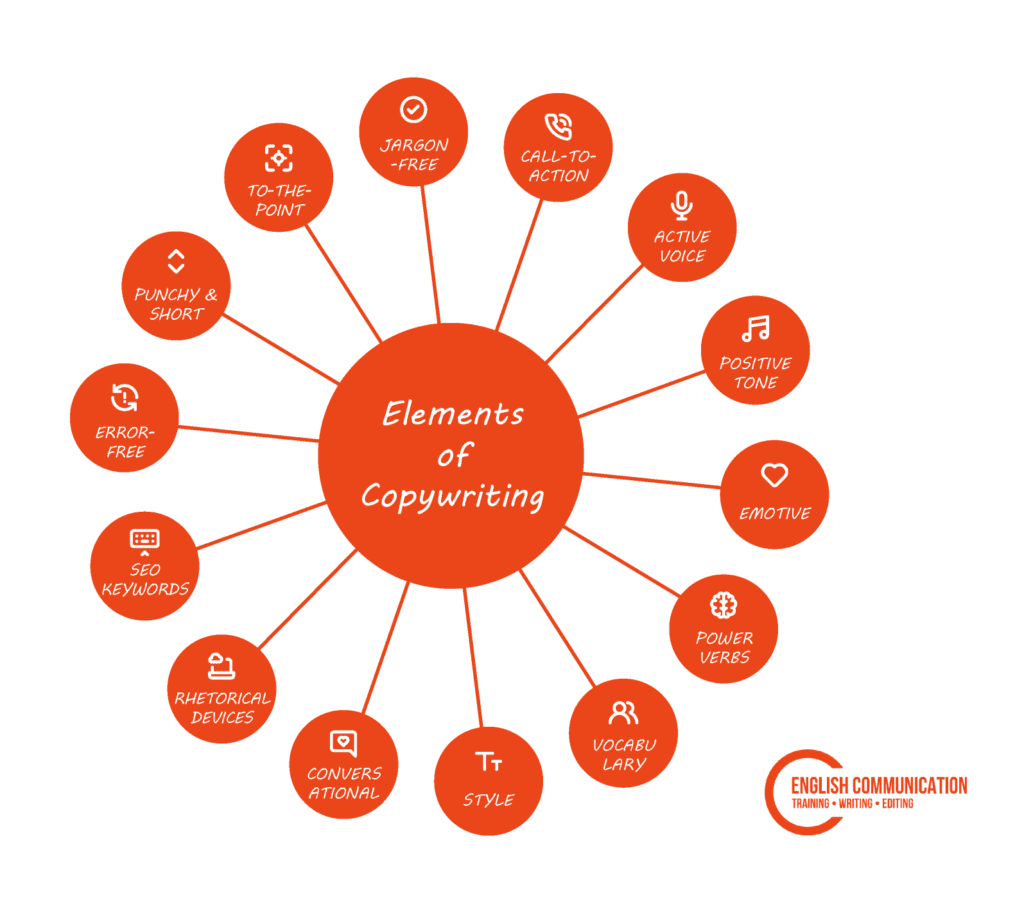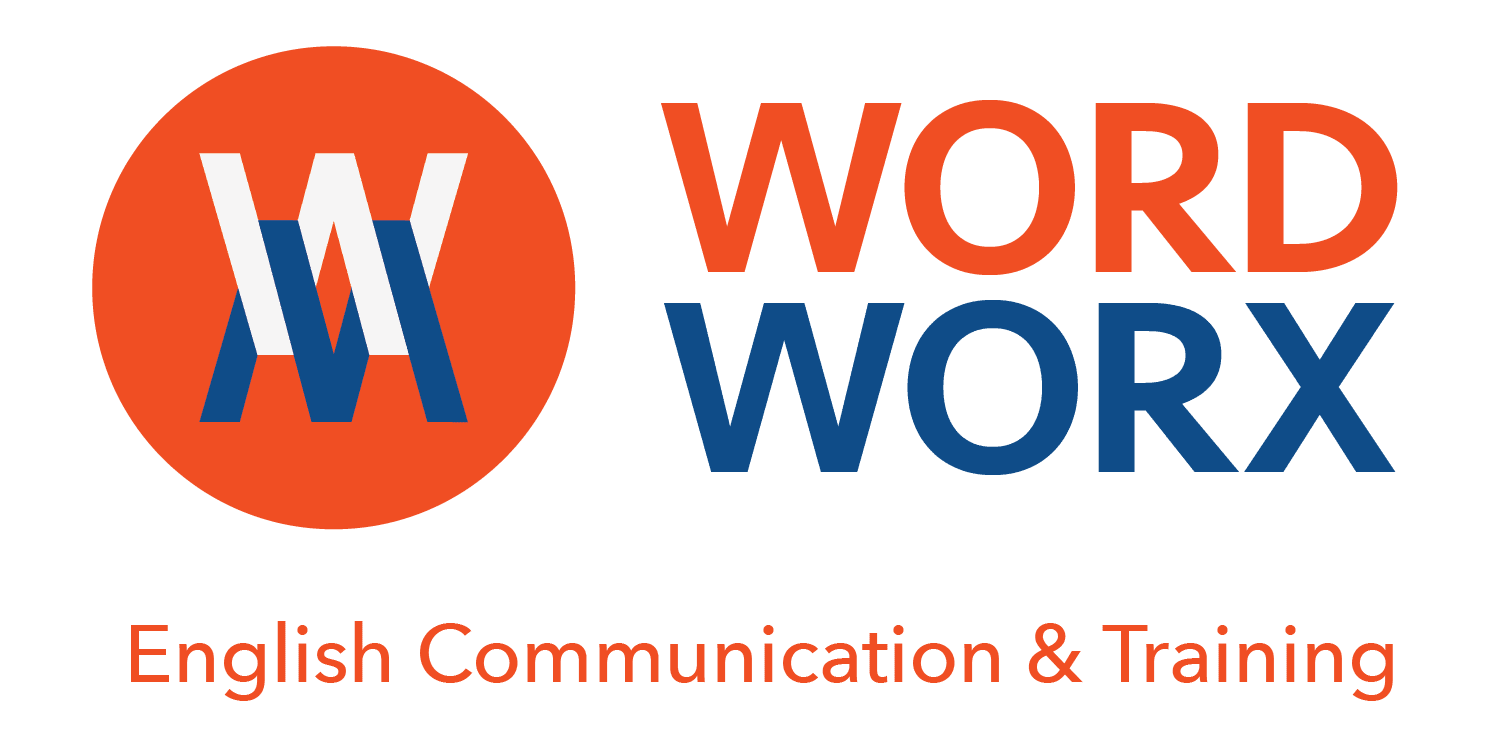Writing good copy for your target audience is no easy task. That’s because there are so many different elements of copywriting to take into consideration when writing. And this makes persuasive writing a complex and often confusing task!
Writing a sentence with a basic call-to-action (CTA) to get your audience to do something just isn’t enough! As a copywriter, the power and art of persuasion need to be carefully studied. The good news is that persuasive tactics have been around since the beginning of humankind and we’ve built up a lot of knowledge on this topic over the centuries.
However, it’s not enough to understand and study the main elements of copywriting, persuasion, and rhetoric. One needs to keep practising these skills daily. What’s more, is that you should also be able to identify these elements in others’ copy – which is why so many copywriters keep folders with examples of great (and sometimes even poor) copy.
14 Elements of Great Copywriting – Infographic
After racking my brain and garnering all my knowledge on the topic, I’ve come up with 14 essential elements of copywriting. These are elements to address when writing persuasively, and being more conscious of them when you write can help make your copy a lot more effective in the long run:

- Jargon-free – your copy needs to be easily understood by your audience. If you use acronyms you need to explain them or write them out in full. Don’t assume that your audience knows everything there is to know about your industry or field! Steer clear of heavy industry-related terms unless you’re sure that your audience will totally get you. Keep language as simple and to-the-point as possible.
- Call-to-action – any copy without a strong call-to-action (CTA) is a wasted opportunity. Ensure you always include a CTA in your writing (be it a social media update or blog post). The kinds of CTAs you’ll use will depend on your audience and what they respond to (you may need to do some A/B testing on this). Nonetheless, try to avoid the time-old clichéd CTAs.
- Active voice – another element of great copywriting is using an active voice. Experienced copywriters use the active voice which creates a sense of urgency, accessibility and directness. Using active voice has many benefits when trying to reach your audience. However, there are of course quite some instances when you may be forced to use the passive voice instead (for example in industry reports, white papers etc.). Although nowadays there is a trend to use more active sentences than passive! You can also double-check with the company’s style guide to see what is acceptable for each communication channel.
- Positive tone – this is a bit of a no-brainer. Effective copy has a positive underlying tone since it lifts the audience up and gets them to do something. Of course, a negative tone can also do that, but it depends on your goals as an organization (and marketing team) and what you want to achieve. So, letting positivity shine through helps place your organization and the written update itself in a positive light, thus potentially leading to more clicks.
- Emotive – studies have shown that copy that invokes the emotions of the audience is more effective. Consider what kind of emotions you want your audience to feel when seeing your update/text i.e. do you want them to worry that they might miss out on something (a limited/exclusive product, for instance). Then think about how you’ll create that sense of worry in their minds leading them to click and possibly purchase. In the field of copywriting, we call this approach ‘scarcity’ – by using the idea that your product is scarce, the audience may very well want it even more!
- Power verbs – power verbs are action words that encourage the audience to perform an action. For instance, the word ‘free’ is one of the most powerful words in the English language. I mean, who doesn’t want something useful for free? Find out what the most powerful words are in your industry (or in general) and use them. Again, you can discover this through A/B testing and a bit of research.
- Vocabulary – what kinds of words are you using? Vocabulary is crucial because you want to use the same kinds of words that your audience would use. Make a list of those possible words and incorporate them in your copy. Also, understand the implications of the words you use as in different cultural and linguistic contexts vocabulary words may have totally different meanings.
- Style – the style of writing is how something is written. For instance, it may be very conversational or really formal and academic. Style depends on your audience. Thus, if your audience is teenagers between the ages of 13 and 15 say, your style of writing will differ greatly from say an audience of middle-aged men. Style is of course closely linked to vocabulary above too.
- Conversational – all copy should be conversational and not static (especially if you’re writing for social media!). You need to engage in an on-going conversation with your audience. Write as people would speak to each other. But, don’t write as though you were the queen – unless she, or women wanting to be queen, is definitely your target audience!
- Rhetorical Devices – there are hundreds of rhetorical devices out there. These devices are used for all types of persuasion (be it in a speech, blog post or in a social media update). I usually refer to the three main rhetorical devices (Ethos, Pathos and Logos) which can help your text become a lot more balanced in terms of persuasion. A simple Google search of ‘rhetorical devices’ will bring up lists of possible rhetorical devices (and tactics!) you could possibly use.
- SEO Keywords – keywords form one of the most crucial elements of great copywriting nowadays. You need to be able to identify the keywords you want to rank for and incorporate them naturally in your copy (no matter how short and no matter where this is published online). There are hundreds of free resources available out there to help you i.e. the Moz Blog is still one of my favourites.
- Error-free – this is a bit of a no-brainer too. Copy should be error-free but there are of course instances when you can break the grammar or punctuation rules if you need to be punchier and to-the-point! I’ve broken a few rules purposely whilst writing this text ;-)
- Punchy and short – one of the main elements of great copywriting is using punchy and short sentences. You need to use punchy sentences in all copy consistently and across all platforms (offline or online). Long sentences are distracting to the reader and can also distract the reader from your CTA…
- To the point – copy, no matter where it is published, needs to be specific and needs to get straight to the point almost instantly. Copy that drags on and on without making a point is absolutely awful for the reader. Additionally, your audience needs and appreciates details so include some accordingly.
Lastly, can you think of any other elements of great copywriting that I might have missed here? Add your tips in the comments below! I’m curious to know what you think!
